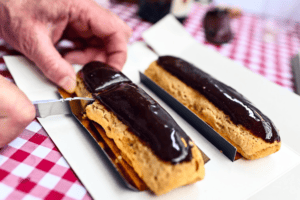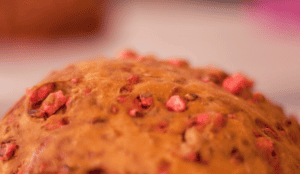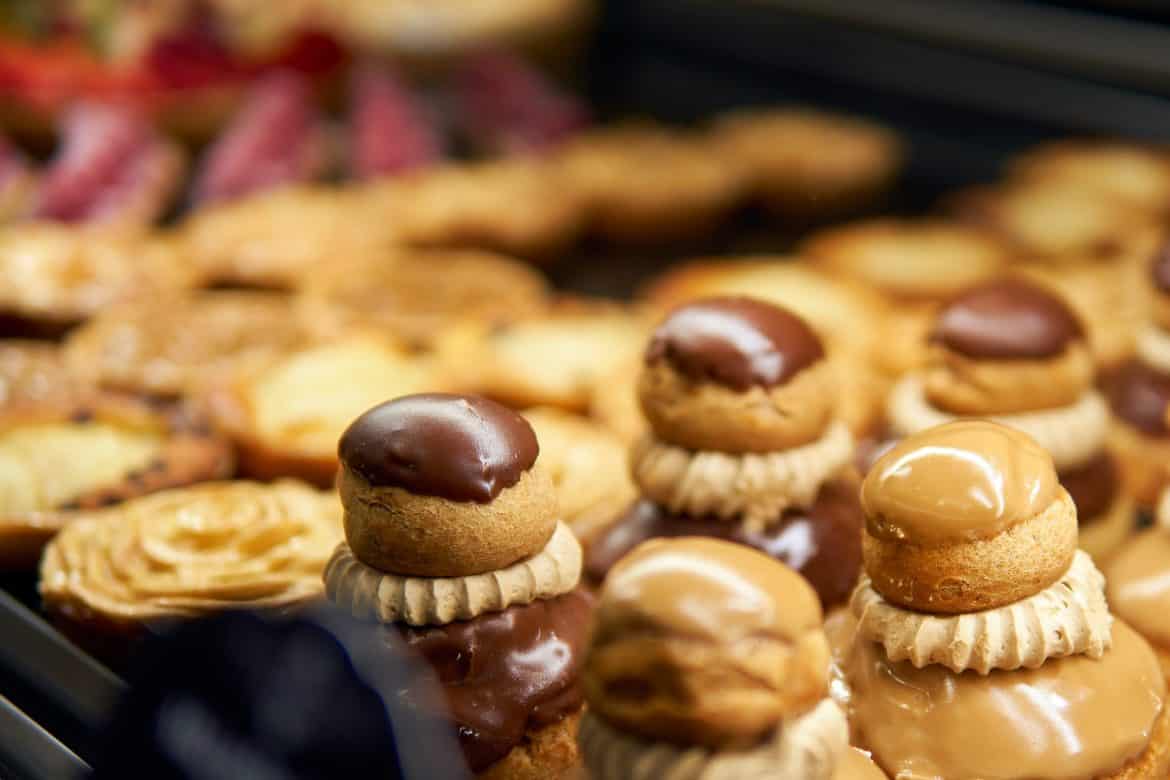Embarking on the Food Tour Lyon is like opening a book filled with flavors and history. Since 1935, Lyon has been renowned as the world capital of gastronomy, a recognition not just of its sumptuous cuisine but also of its enduring culinary traditions. This tour offers more than a taste of local dishes; it is a foray into the essence of Lyon’s culture, where every flavor tells a story of heritage and innovation.
From the outset at the steps of the Protestant Temple of the Change, the tour is an exploration of history through cuisine. It pays homage to the Canut silk workers whose robust meals powered their demanding days. These historical flavors are deeply embedded in Lyon’s identity, resonating through time.
But what makes Lyon’s culinary scene truly stand out? At its heart are the French pastries, an art form in their own right. These aren’t just sweets; they’re masterpieces of flavor and technique, representing centuries of perfected craft. The city’s bakers and pastry chefs, with their deft hands and creative minds, continue to enchant locals and visitors alike with their exquisite creations.
Lyon: A Cultural and Gastronomic Hub

The roots of Lyon’s culinary identity are deeply intertwined with its history as a center for silk trade. Dating back to the 15th century, King Louis XI was instrumental in establishing Lyon as a national silk industry hub, mainly employing skilled Italian workers from regions known for their master silk weavers. This development marked the beginning of Lyon’s journey to become the European capital of silk trade. By the 17th century, Lyon boasted over 10,000 looms, cementing its status as a global center for silk weaving.
Silk was more than a mere fabric; it symbolized wealth and status, exclusively used by society’s upper echelons. This focus on luxury and fine craftsmanship had a significant impact on Lyon’s culture, including its gastronomy. The demand for exquisite goods and the influx of wealthy merchants fostered an environment where culinary arts could thrive, leading to the emergence of sophisticated cuisine that matched the city’s opulent silk creations.
Lyon’s transition to the world capital of gastronomy was fueled by its rich past in silk production. The city’s strategic location at the confluence of the Rhône and Saône rivers made it a natural trade hub, further enhancing its economic and cultural growth. This position facilitated the exchange of not just goods but also culinary ideas and practices, enriching the city’s food culture.
The silk industry’s rise and fall shaped Lyon’s socio-economic landscape profoundly. The Canut revolts in the 19th century, driven by silk workers’ demands for fair wages, marked a significant chapter in the city’s history, intertwining social movements with the city’s economic fabric. These tumultuous times in the silk industry also reflected the dynamic nature of Lyon’s society, which undoubtedly influenced its culinary traditions. This era of social and economic upheaval likely played a role in shaping the resilience and innovation that characterizes Lyon’s gastronomy today.
The Heart of Lyon’s Gastronomy: French Pastry

The origins of French pastry date back to medieval times, with the earliest pastry chefs known as “pâtissiers” specializing in creating intricate pastries for the nobility. The Renaissance brought new ingredients like sugar and spices, significantly transforming pastry making. By the 17th century, the introduction of chocolate from Spain further revolutionized the world of pastries. French pastries have since evolved, adapting to changing tastes while maintaining their deep connection to French culture.
The introduction of items like sponge cakes and macaroons in the 16th century, largely influenced by Italian cuisine, marked the beginning of a more diverse range of pastries. Lyon, with its rich history as a silk trade hub, was poised to be a part of this pastry evolution, catering to the sophisticated tastes of its affluent inhabitants and visitors.
Several classic French pastries, such as the mille-feuille, macaron, Saint-Honoré, opéra, tarte citron meringuée, and fraisier, have become synonymous with French culinary artistry. Each of these pastries has its own unique history and place in French culture. For example, the mille-feuille, known for its layered puff pastry and pastry cream, and the macaron, a sweet meringue-based confectionery, are both considered staples in French pastry shops.
In Lyon, pastry chefs like Sébastien Bouillet, who opened a “Gâteau Ecole” or cake school, contribute to the city’s pastry landscape with their thematic courses and innovative creations. Master chocolatier and pastry chef Richard Sève in Lyon is also known for his original creations, showcasing the blend of tradition and modernity in Lyon’s pastry scene.
French pastries are not just a reflection of the country’s rich history and culture but also of the ingenuity and adaptability of its pastry chefs. Over the centuries, these artisans have continuously pushed the boundaries of culinary creativity. The rise of the French café culture helped popularize pastries among all social classes, and the French Revolution led to a new era of social mobility and innovation in patisserie. The 20th century saw French pastries gain international recognition, partly due to the work of famous pastry chefs.
The legacy of French pastry is evident in Lyon’s culinary tradition, where the blend of the city’s historical significance and the skill of its pastry chefs creates a unique gastronomic experience. These chefs preserve the artistry and craftsmanship of traditional French pastries while adapting to contemporary tastes and culinary trends.
Praluline and Beyond: Tasting Lyon’s Signature Pastries

Praluline, a brioche filled with pink pralines, is a classic pastry that has become synonymous with Lyon’s culinary excellence. This signature pastry was created by Auguste Pralus, a renowned pastry chef in Roanne, in 1955. Auguste Pralus was recognized as a Meilleur Ouvrier de France, a title awarded for exceptional craftsmanship. The Praluline is known for its unique combination of a buttery, brioche dough and crunchy, sugary pink pralines made from almonds and hazelnuts. This pastry’s success is attributed to its distinctive flavor and texture, making it a beloved treat among locals and visitors alike.
François Pralus, Auguste’s son, continued his father’s legacy, maintaining the original recipe and expanding the Pralus brand. François, also a master chocolatier, is known for his dedication to quality, sourcing the best ingredients for his creations. The Praluline has become a culinary symbol of the Roanne region, and its fame has spread well beyond, with Pralus shops now found in several cities, including Lyon.
The process of making Praluline is meticulous, beginning with the preparation of the dough a day ahead. The brioche dough is rich in butter, ensuring a moist and fluffy texture. The pralines, a mixture of Spanish almonds and Piedmont hazelnuts, are roasted and coated in a sugar syrup colored with cochineal, giving them their signature pink hue. The pralines are then crushed and mixed into the brioche dough. The dough undergoes a fermentation process overnight, followed by a careful baking process, resulting in a pastry that is at once airy, dense, and caramelized.
While Praluline is a standout, Lyon’s pastry scene is diverse and rich, featuring a variety of traditional and innovative creations. From classic French pastries like croissants and éclairs to more localized specialties such as the traditional Lyon praline tart, the city offers a wide array of choices for pastry enthusiasts. Each pastry shop in Lyon adds its unique touch to these delicacies, reflecting the city’s deep-rooted culinary traditions and contemporary flair.
Beyond Pastries: Exploring Lyon’s Culinary Diversity
While the French pastries of Lyon are a highlight, the Food Tour Lyon offers a broader exploration of the city’s rich culinary landscape. Let’s take a look at some of the other gastronomic delights that this tour showcases, beyond the realm of sweet treats.
Traditional Canut Breakfast Sampling
The tour gives a nod to Lyon’s silk industry history by featuring a traditional Canut breakfast. This hearty meal was originally designed to fuel the hard-working silk workers, known as Canuts, and provides a perfect grasp of the city’s working-class culinary roots.
Hot Dishes of the Day
Lyon’s gastronomy is celebrated for its hot dishes, which showcase the region’s seasonal and local produce. These dishes often feature ingredients and recipes passed down through generations.
Amazing French Cheeses
No culinary tour in France would be complete without a taste of its world-famous cheeses. The tour includes stops at spots where guests can savor the rich and varied flavors of French cheese, a cornerstone of the country’s gastronomy.
A Very Lyonnais’ Sweet
In addition to the pastries, the tour introduces participants to other traditional Lyonnais sweets, demonstrating the city’s versatility in creating both savory and sweet delicacies.
Local Wines
The tour also offers a chance to sample some of the region’s exquisite wines. Lyon, situated near famous wine-producing regions like Beaujolais and the Rhone Valley, has a deep viticultural culture, making wine tasting an essential part of the culinary experience.
The Secret Dish
As with all our tours, there’s the exciting inclusion of a Secret Dish. This dish is carefully selected to surprise and delight, embodying the essence of Lyon’s culinary innovation and tradition.
For an authentic and comprehensive exploration of Lyon’s exquisite culinary landscape, consider joining the Food Tour Lyon. This journey offers an opportunity to immerse yourself in a very tasty world. Ready to discover the culinary secrets of Lyon? Book your spot on the Food Tour Lyon today and prepare to be enthralled by the tastes and aromas that make this city a true gastronomic paradise.
